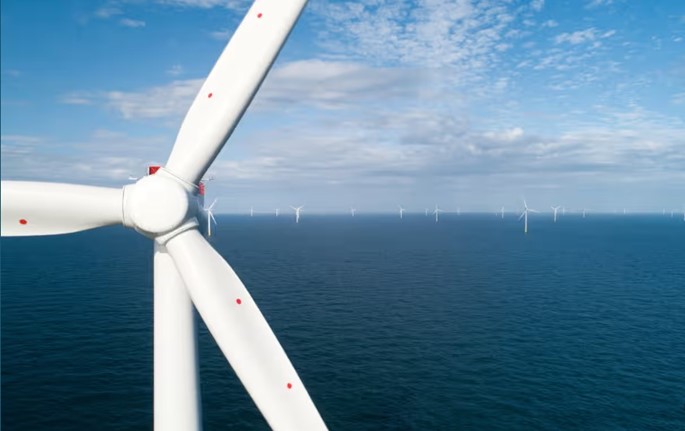
Danish Wind Power Giant Ørsted Delays Major U.S. Offshore Project
Ørsted, the Danish company developing the world's largest offshore windfarm in the North Sea, has announced a delay in its major U.S. project off the northeast coast, following the cancellation of two other Atlantic windfarms and significant job cuts due to rising costs.
The start of commercial operations at Ørsted's 704-megawatt Revolution Wind project, located off the coast of Rhode Island and Connecticut, has been postponed by a year to 2026. This delay is expected to contribute to a 3.2 billion Danish kroner ($472 million) impairment cost in the company's second-quarter financial results.
This latest financial setback follows Ørsted's decision last year to cancel two significant windfarms off the coast of New Jersey, Ocean Wind I and II, amid surging costs that have affected the global wind power industry. In the wake of these financial challenges, Ørsted's Chief Financial Officer, Daniel Lerup, and Chief Operating Officer, Richard Hunter, resigned, citing the need for "new and different capabilities" within the company.
Earlier this year, Ørsted announced plans to cut up to 800 jobs and scale back operations in Spain, Portugal, and Norway. The company also suspended dividend payments to shareholders for the 2023-2025 financial years as part of a "reset plan" aimed at making the company leaner and more efficient. This move comes in response to the combined impact of soaring inflation, higher interest rates, and supply chain disruptions that have derailed construction plans across the wind power industry.
Despite these challenges, Ørsted's existing portfolio of operating windfarms performed well, with second-quarter earnings rising to 5.27 billion kroner, a nearly 60% increase from the same period last year, and exceeding industry analysts' predictions of 4.41 billion kroner.
Ørsted remains on track to deliver what could become the world's largest offshore windfarm, the 2.9GW Hornsea 3 project, located off the Yorkshire coast, by 2027. This project aligns with the new Labour government's goal to quadruple the UK's offshore wind capacity and is expected to generate enough green electricity to power the equivalent of 3 million UK homes.
The £8.3 billion Hornsea 3 project will join the 1.3GW Hornsea 1 and 1.3GW Hornsea 2 offshore windfarms, which together provide enough electricity to power 2.5 million UK homes. The final development, Hornsea 4, which received approval last year, could add up to 2.6GW of capacity. Altogether, the Hornsea offshore wind zone will generate enough clean electricity to power the equivalent of 8 million UK homes.